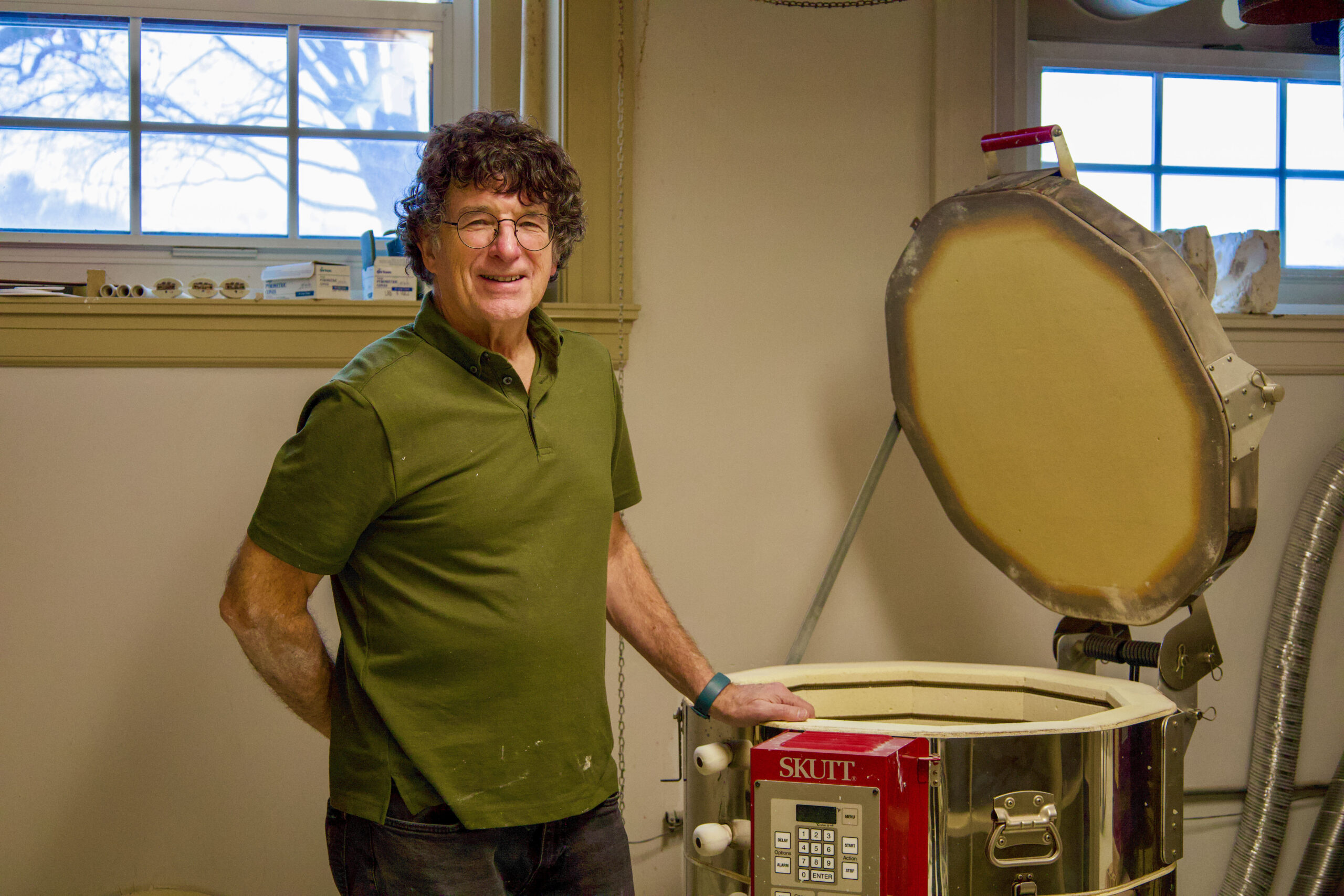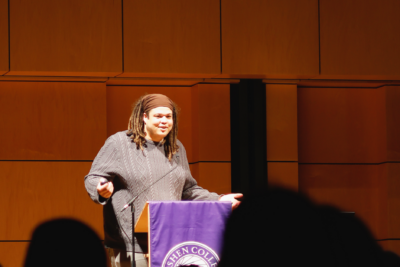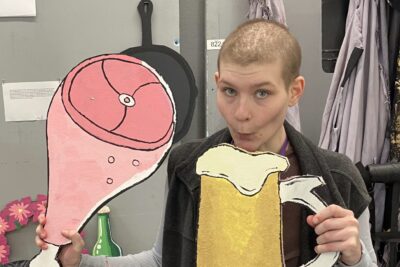After 22 years, the longtime interdisciplinary and arts professor Merrill Krabill announced his retirement from Goshen College effective May 2024.
Krabill ’79 started his employment in September 2001 and has been a professor of art since being promoted to the department chair in 2009.When asked about what he was most proud of in his time at Goshen, Krabill responded with no hesitation.
“In the end, it’s all about people,” he said, “both as … a person and a parent and a teacher. When my kids do well … that’s the thing that … makes it feel worthwhile.”
Krabill’s office is located in the visual arts building. It sits at the top of the staircase and is quaint with a comfortable feel. Upon entering the room, next to the guest chair a painted scroll sits on the wall and a small clay sculpture in the corner.
Sara Method, assistant professor of the art department, acknowledges the hole that Merrill’s retirement will leave.
“On my [job] interview, he was really upfront and welcoming, and I knew right way that we would work well together,” Method said.
“He’s just so kind and generous and willing to help wherever he can and offer insight, offer humor, all of those things which will be greatly missed.”
Joe Springer, director of the Mennonite Historical Library, said of Krabill, “Still waters run deep. He’s a quiet guy, but he thinks very deeply about the art he creates.
“A lot of his artwork I think grows out of personal experiences and values … he uses the art to process those kinds of things.”
Born in Vietnam, Krabill found a home here in Goshen during his college years. He has held many different positions in various places throughout the country prior to GC. Those include a stint in Portland, Oregon, as an adjunct lecturer, an associate art professor at Bethel College in Kansas, and time as a studio assistant in Colorado.
Looking back, one of Krabill’s most memorable teaching experiences was the opportunity to be an artist-in-residency in Shigaraki, Japan in the summer of 2005.
“It was a wonderful exposure to a culture I have appreciated all my life,” Krabill said.
In Krabill’s work, he likes “exploring the idea of the edge of life [and] the end of life.” He often represents this idea with birds.
“What I liked was that the bird form … when it’s clay, [it] can be really mortal and dead … I’d have this on the wall and an image [of] the birds flying and so the flying birds just seemed very alive. They also seem like they’re flying away, you know … moving on.”
With a new chapter unfolding and moving on, there’s a daunting question to ask: where will this bird fly next?
“It’s going to be a bit of an unknown because I’m not sure what it’s like,” Krabill said.
“A big part of it is just getting a chance to do more art. And so that’s what I’m hoping for. A chance to spend time in the studio … It’s hard to find time to do studio work, so I’m looking forward to the chance to do more of that.”



